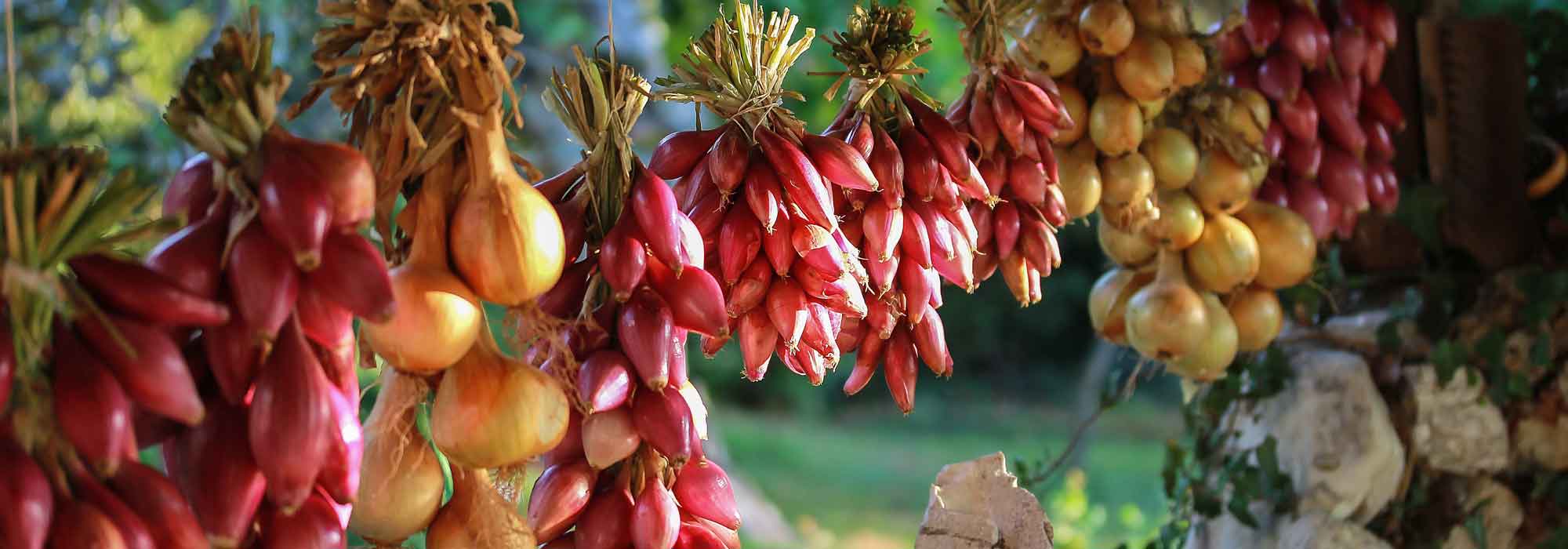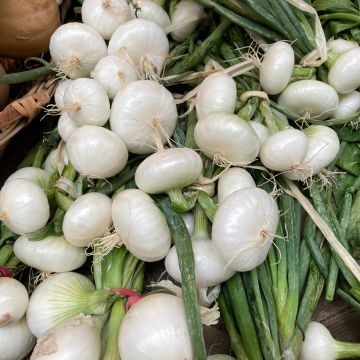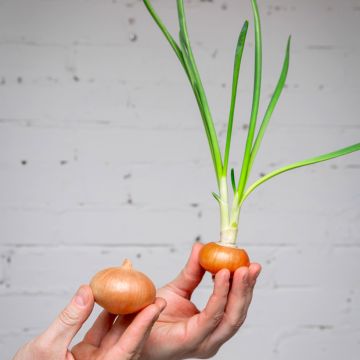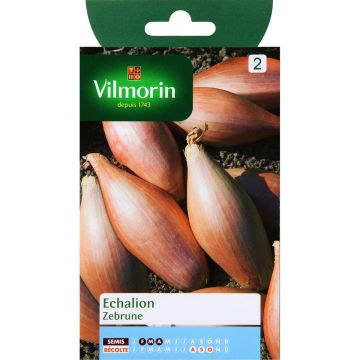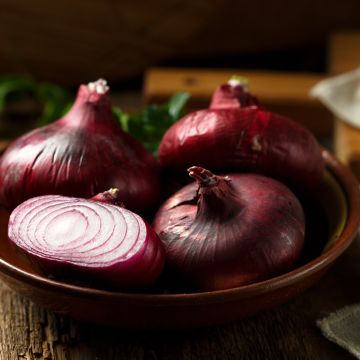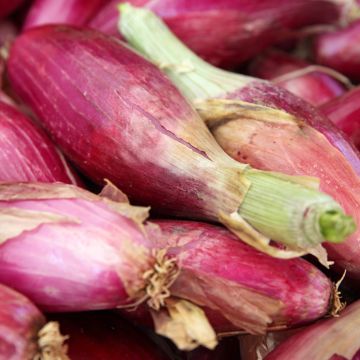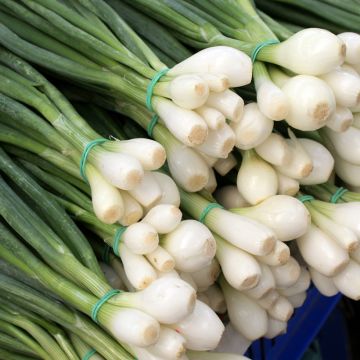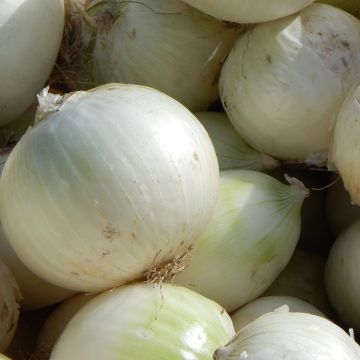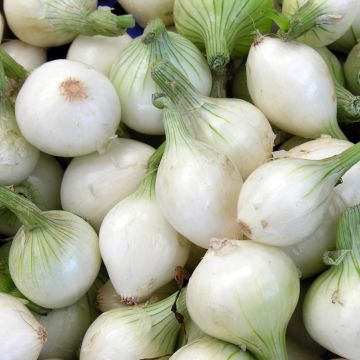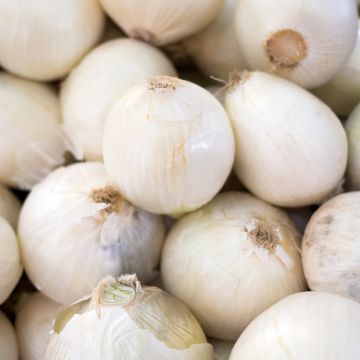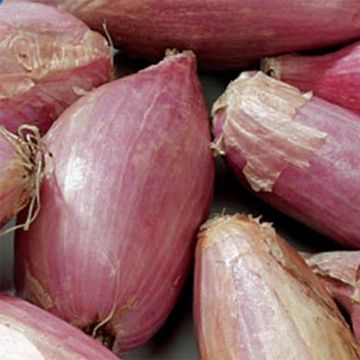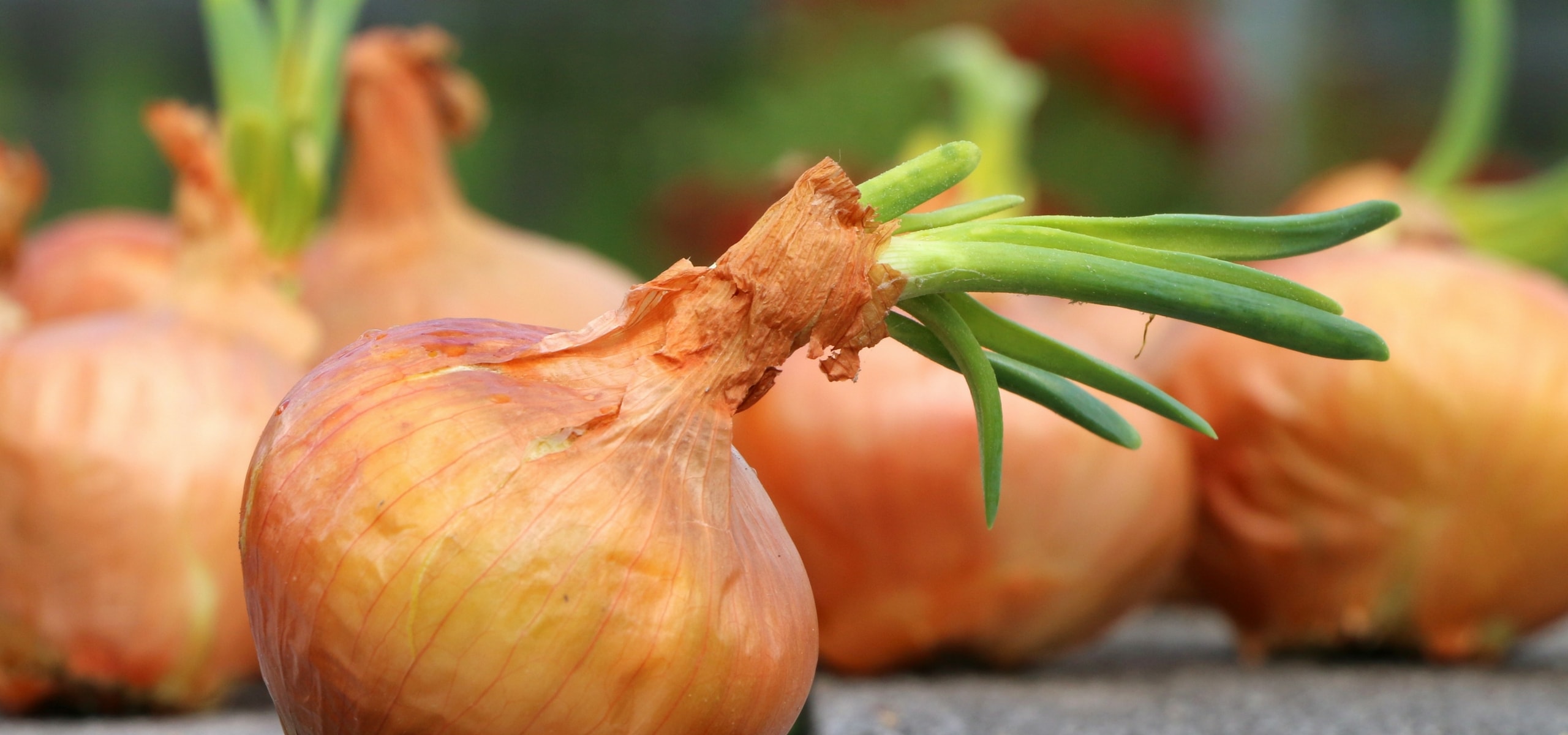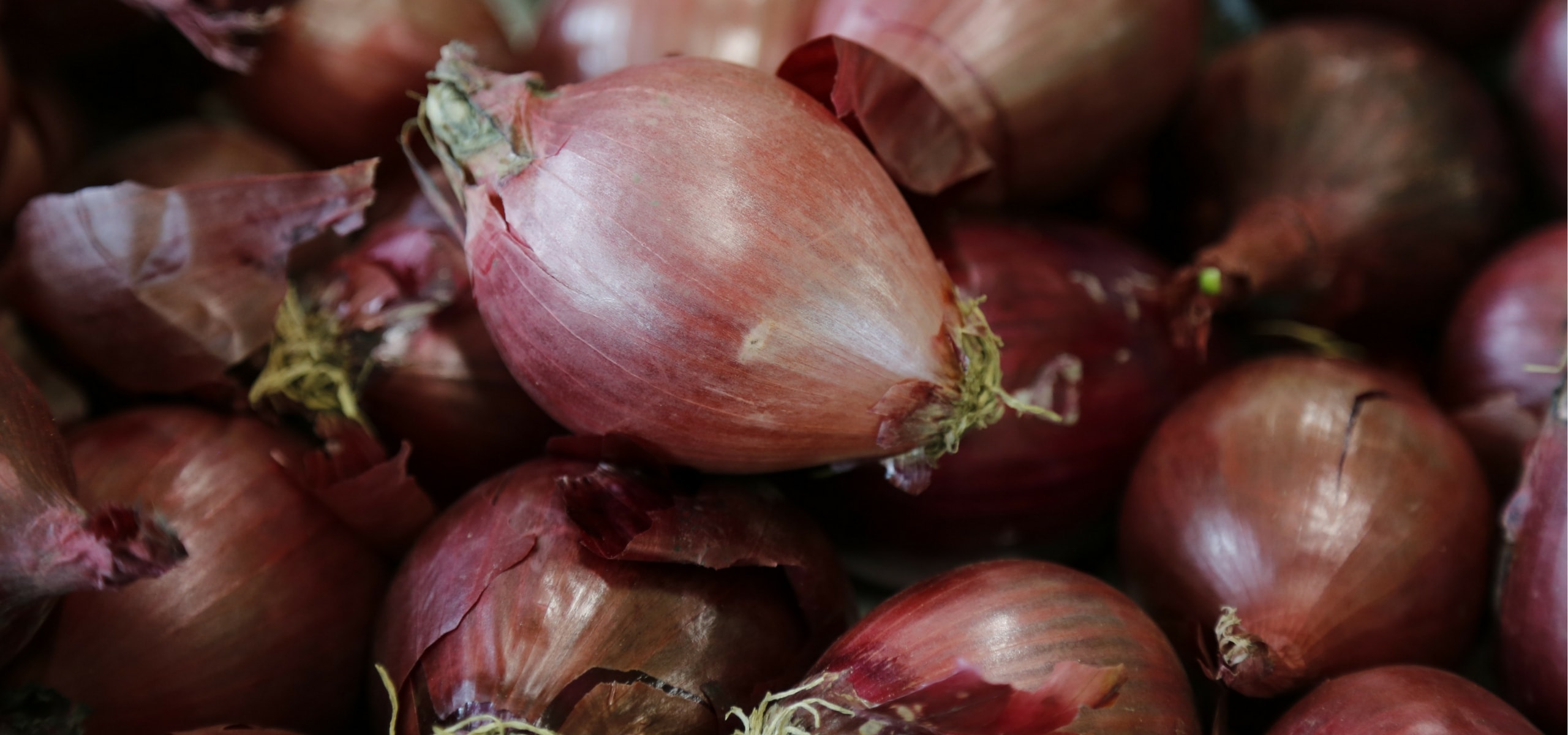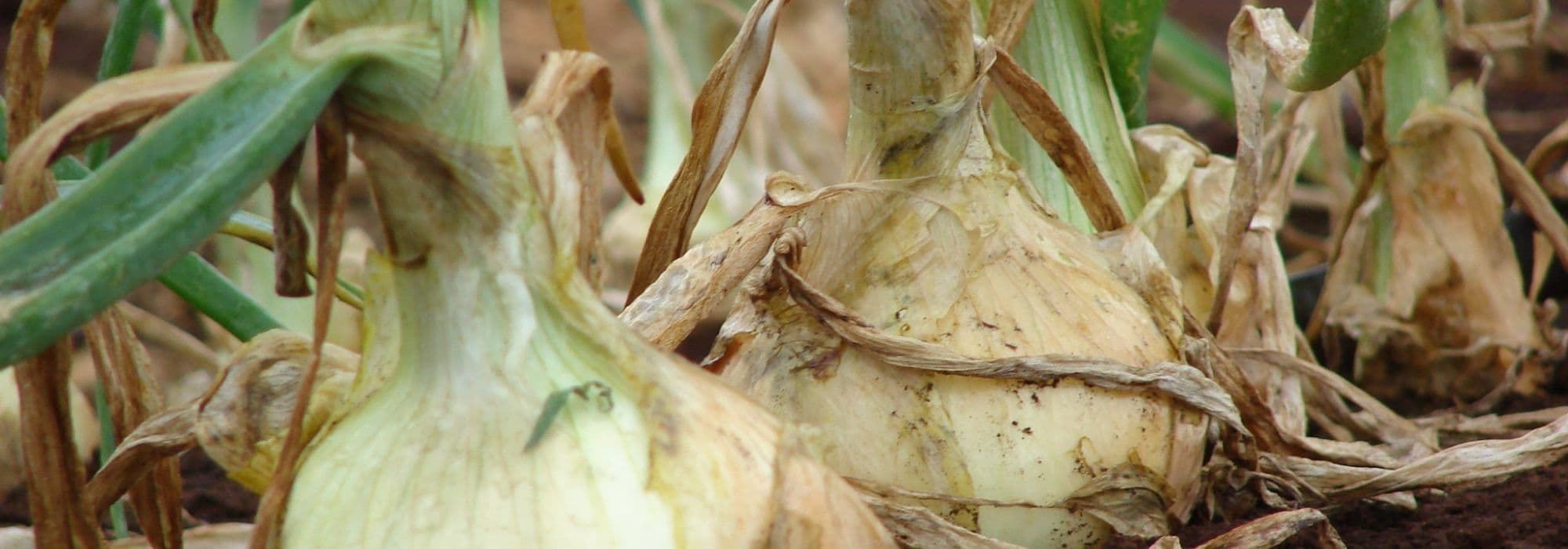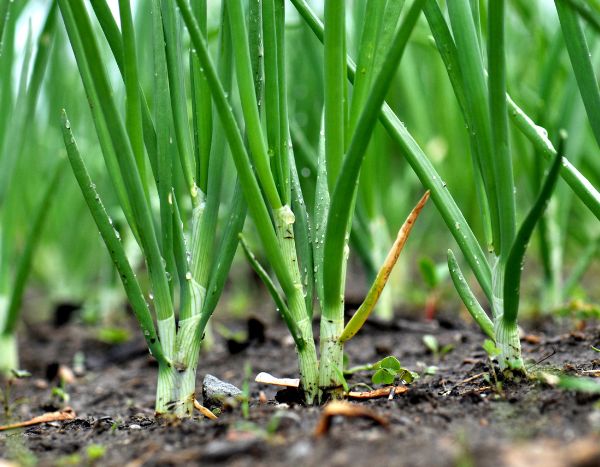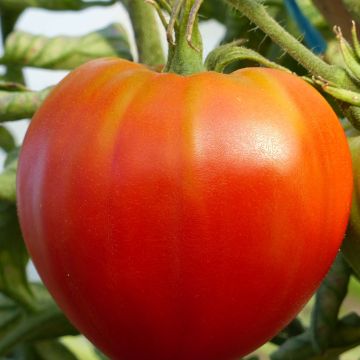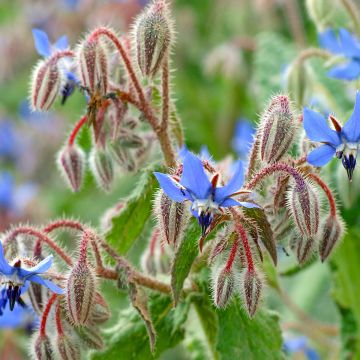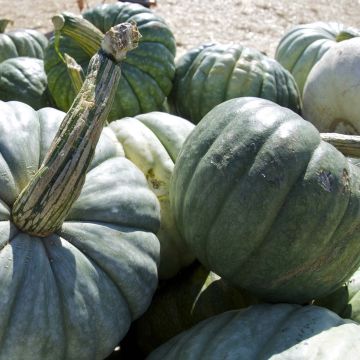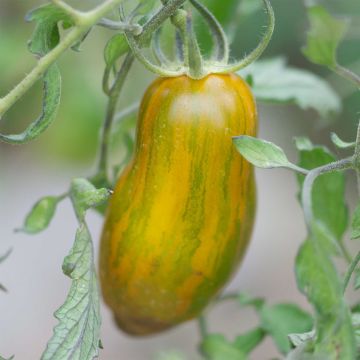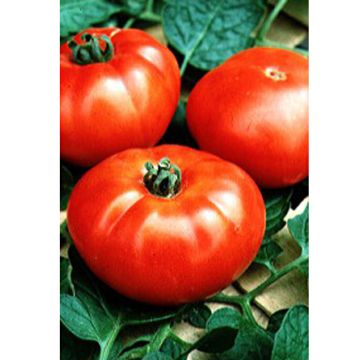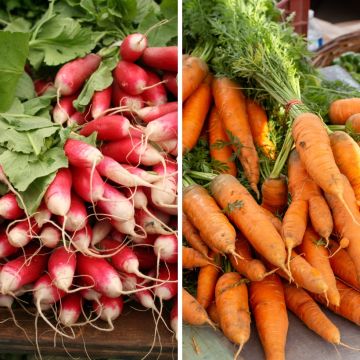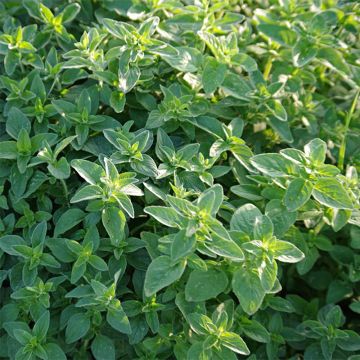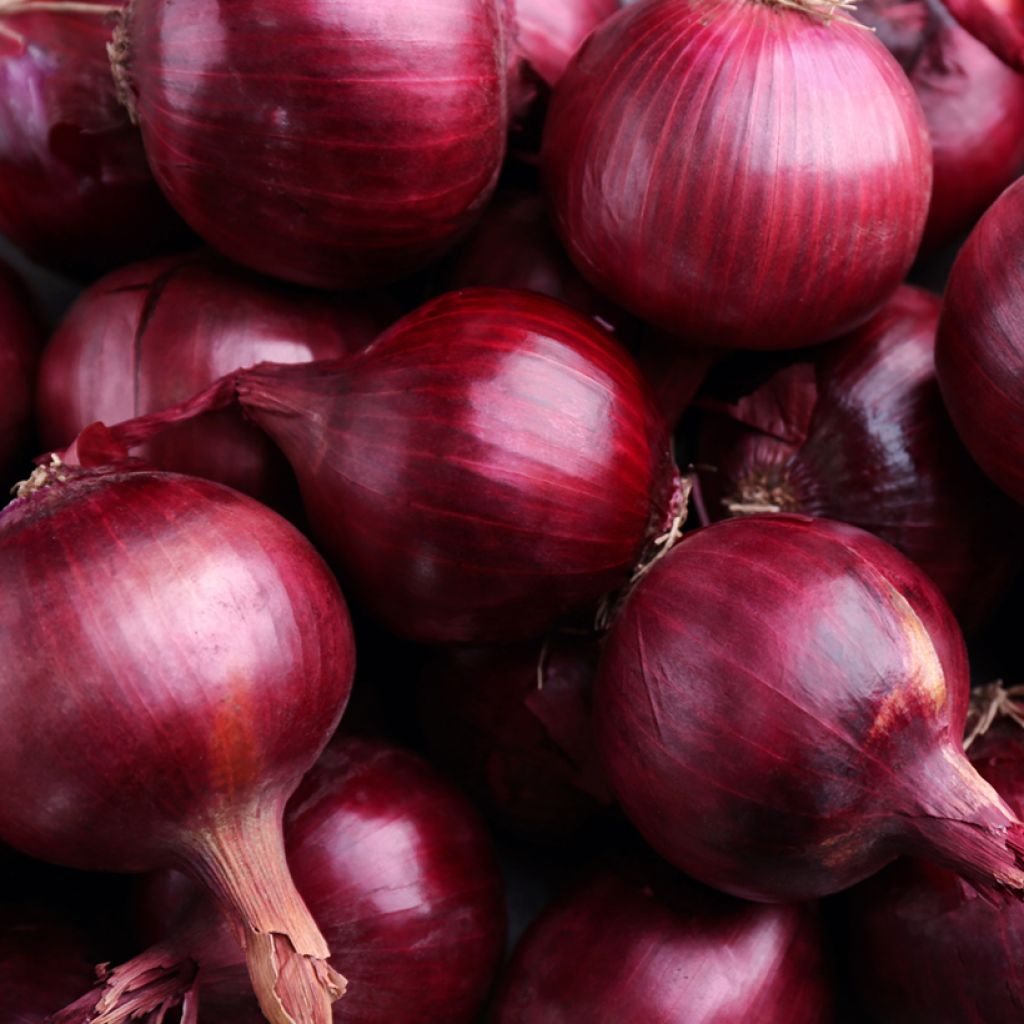

Rouge foncé de Brunswick Red Onion - Allium cepa
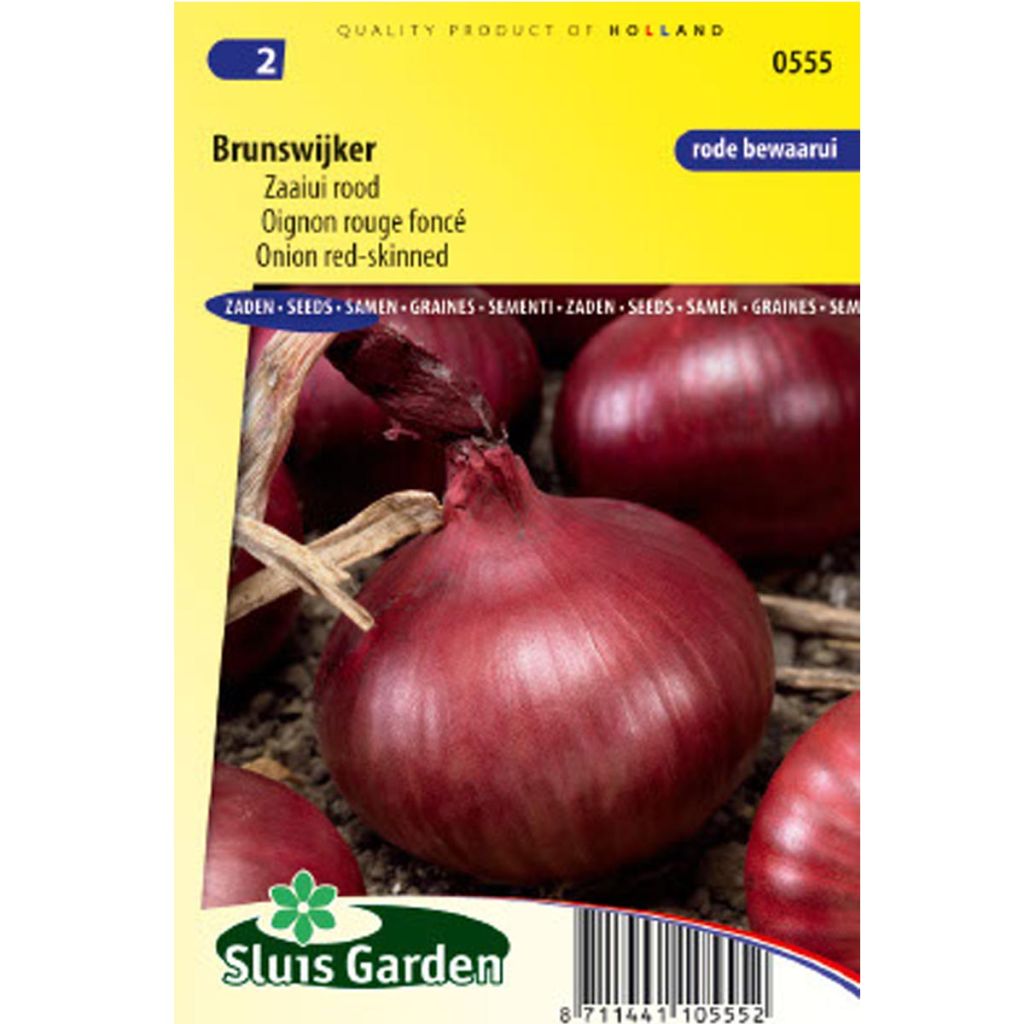

Rouge foncé de Brunswick Red Onion - Allium cepa
Rouge foncé de Brunswick Red Onion - Allium cepa
Allium cepa Rouge foncé de Brunswick
Onion, Common onion, Garden onion
Special offer!
Receive a €20 voucher for any order over €90 (excluding delivery costs, credit notes, and plastic-free options)!
1- Add your favorite plants to your cart.
2- Once you have reached €90, confirm your order (you can even choose the delivery date!).
3- As soon as your order is shipped, you will receive an email containing your voucher code, valid for 3 months (90 days).
Your voucher is unique and can only be used once, for any order with a minimum value of €20, excluding delivery costs.
Can be combined with other current offers, non-divisible and non-refundable.
Home or relay delivery (depending on size and destination)
Schedule delivery date,
and select date in basket
This plant carries a 6 months recovery warranty
More information
We guarantee the quality of our plants for a full growing cycle, and will replace at our expense any plant that fails to recover under normal climatic and planting conditions.
Description
The Brunswick Dark Red Onion forms dark purple, slightly flattened spherical bulbs with a fig-like appearance. Very hardy and late-maturing, it is easily grown in regions north of the Loire River. With its beautiful color, this onion is unmatched in enhancing the taste and color of all types of composed salads. Its flavor is both subtle and pungent, and when picked young and still green, it can be used in confits or pickles and pairs perfectly with cold meats. It can be consumed raw or cooked. You can sow the Brunswick Dark Red Onion from late February to April and harvest it in August and September. As it can be stored for several months, you can enjoy it for a long time.
The onion is a plant cultivated as a vegetable and a condiment. It can be consumed raw, cooked, or pickled. It is used in salads, soups, pissaladières, or cooked with cheese or charcuterie. The onion is a biennial herbaceous plant with cylindrical, hollow stems and flower stalks. The fleshy bulb is consumed, and sometimes the stems are used like chives. The term "onion" is also used for all flowering bulbs. In the second year, it produces umbel-shaped flowers that will form seeds. Some varieties do not produce flowers but instead produce aerial bulblets.
There are around 900 species of onions, which are commonly categorized by color: white, yellow, red, pink, or green. The onion is native to Central Asia, where it has been consumed for over 6000 years. Its presence is also documented in the tombs of pharaohs as a food supply. Its therapeutic and gustatory virtues were already recognized. The Romans later introduced the onion to Western Europe. It is worth noting that Christopher Columbus introduced the onion to the Americas during his second voyage.
This vegetable, rich in sulphurous compounds, causes tears when cut. It is these same compounds that are responsible for its hypoglycemic properties. Among other properties, the onion is known to reduce cholesterol levels in the blood and lower blood pressure. Rich in vitamins A, B, C, and minerals, it is often more digestible when cooked and develops a sweeter taste.
Harvesting: To keep your onions for as long as possible, it is necessary to harvest them under good conditions. First, make sure you have two to three days of good weather ahead. Onions are ready to harvest when the stems are completely dried out and lying on the ground. Gently pull them out and let them dry for two to three days on the ground in the sun. Afterward, remove the excess dried soil by lightly rubbing them. Spring sowings are harvested in July-August to be consumed in autumn and winter. Autumn sowings are harvested in March to be consumed in spring and summer.
Storage: If the condition of the stems allows, you can braid them and hang the bundles. Otherwise, place your onions on racks in a dark, cool, dry, and well-ventilated place to prevent them from rotting. Check beforehand that they have not been bruised to avoid rot that could contaminate your entire harvest. If the storage location is too warm, the onions may start to sprout. They can be stored for 5 to 7 months under good conditions. Of course, you can also consume your onions as you need them. Fresh onions are even better. In this case, the fresh leaves are also edible.
Gardener's tip: Associate your onions with carrots. Onions repel carrot flies, while carrots moderate attacks from onion flies. Onions like the company of beets, strawberries, and lettuces. However, they hinder the growth of broad beans, peas, and beans.
Harvest
Plant habit
Foliage
Botanical data
Allium
cepa
Rouge foncé de Brunswick
Alliaceae
Onion, Common onion, Garden onion
Cultivar or hybrid
Biennial
Other Onion seeds
View all →Planting and care
Soil preparation: Onions thrive and grow in all types of soil, preferably light ones. Simply avoid sowing too soon after amending the soil. Onions also dislike overly wet soil, so moderate watering is necessary. Depending on the variety or your own preferences, you can sow in spring or autumn. For spring sowing, compost in autumn, and vice versa for autumn sowing, amend in late spring. Just before sowing, loosen and aerate the soil without turning it over.
Spring sowing: Sow directly in open ground from late February to May. Start by digging a furrow 2 cm (1in) deep, then sow thinly. Close the furrow by lightly tamping it down with a rake. Moisten the soil immediately afterwards. Germination occurs in about 18 days. When the plants reach 5 cm (2in), thin them out, keeping only the strongest ones. Leave a 10 cm (4in) space between the different plants. Space your furrows 20 cm (8in) apart.
Autumn sowing: Autumn sowing can be done from August to October. Sow indoors for transplanting to open ground from November onwards if your winters are mild. The onions will remain in the ground throughout winter and will be harvested in March. Transplant in February if your winters are harsher. Space each plant 10 cm (4in) apart and your furrows 20 cm (8in) apart. Sowing is not the only method of onion propagation: you can also directly replant bulblets in the soil. This is a fairly simple method that takes place in spring.
Regular tasks: Regularly weed. Do not overwater, as onions are sensitive to humidity.
Seedlings
Care
Intended location
Planting & care advice
This item has not been reviewed yet - be the first to leave a review about it.
Similar products
Haven't found what you were looking for?
Hardiness is the lowest winter temperature a plant can endure without suffering serious damage or even dying. However, hardiness is affected by location (a sheltered area, such as a patio), protection (winter cover) and soil type (hardiness is improved by well-drained soil).

Photo Sharing Terms & Conditions
In order to encourage gardeners to interact and share their experiences, Promesse de fleurs offers various media enabling content to be uploaded onto its Site - in particular via the ‘Photo sharing’ module.
The User agrees to refrain from:
- Posting any content that is illegal, prejudicial, insulting, racist, inciteful to hatred, revisionist, contrary to public decency, that infringes on privacy or on the privacy rights of third parties, in particular the publicity rights of persons and goods, intellectual property rights, or the right to privacy.
- Submitting content on behalf of a third party;
- Impersonate the identity of a third party and/or publish any personal information about a third party;
In general, the User undertakes to refrain from any unethical behaviour.
All Content (in particular text, comments, files, images, photos, videos, creative works, etc.), which may be subject to property or intellectual property rights, image or other private rights, shall remain the property of the User, subject to the limited rights granted by the terms of the licence granted by Promesse de fleurs as stated below. Users are at liberty to publish or not to publish such Content on the Site, notably via the ‘Photo Sharing’ facility, and accept that this Content shall be made public and freely accessible, notably on the Internet.
Users further acknowledge, undertake to have ,and guarantee that they hold all necessary rights and permissions to publish such material on the Site, in particular with regard to the legislation in force pertaining to any privacy, property, intellectual property, image, or contractual rights, or rights of any other nature. By publishing such Content on the Site, Users acknowledge accepting full liability as publishers of the Content within the meaning of the law, and grant Promesse de fleurs, free of charge, an inclusive, worldwide licence for the said Content for the entire duration of its publication, including all reproduction, representation, up/downloading, displaying, performing, transmission, and storage rights.
Users also grant permission for their name to be linked to the Content and accept that this link may not always be made available.
By engaging in posting material, Users consent to their Content becoming automatically accessible on the Internet, in particular on other sites and/or blogs and/or web pages of the Promesse de fleurs site, including in particular social pages and the Promesse de fleurs catalogue.
Users may secure the removal of entrusted content free of charge by issuing a simple request via our contact form.
The flowering period indicated on our website applies to countries and regions located in USDA zone 8 (France, the United Kingdom, Ireland, the Netherlands, etc.)
It will vary according to where you live:
- In zones 9 to 10 (Italy, Spain, Greece, etc.), flowering will occur about 2 to 4 weeks earlier.
- In zones 6 to 7 (Germany, Poland, Slovenia, and lower mountainous regions), flowering will be delayed by 2 to 3 weeks.
- In zone 5 (Central Europe, Scandinavia), blooming will be delayed by 3 to 5 weeks.
In temperate climates, pruning of spring-flowering shrubs (forsythia, spireas, etc.) should be done just after flowering.
Pruning of summer-flowering shrubs (Indian Lilac, Perovskia, etc.) can be done in winter or spring.
In cold regions as well as with frost-sensitive plants, avoid pruning too early when severe frosts may still occur.
The planting period indicated on our website applies to countries and regions located in USDA zone 8 (France, United Kingdom, Ireland, Netherlands).
It will vary according to where you live:
- In Mediterranean zones (Marseille, Madrid, Milan, etc.), autumn and winter are the best planting periods.
- In continental zones (Strasbourg, Munich, Vienna, etc.), delay planting by 2 to 3 weeks in spring and bring it forward by 2 to 4 weeks in autumn.
- In mountainous regions (the Alps, Pyrenees, Carpathians, etc.), it is best to plant in late spring (May-June) or late summer (August-September).
The harvesting period indicated on our website applies to countries and regions in USDA zone 8 (France, England, Ireland, the Netherlands).
In colder areas (Scandinavia, Poland, Austria...) fruit and vegetable harvests are likely to be delayed by 3-4 weeks.
In warmer areas (Italy, Spain, Greece, etc.), harvesting will probably take place earlier, depending on weather conditions.
The sowing periods indicated on our website apply to countries and regions within USDA Zone 8 (France, UK, Ireland, Netherlands).
In colder areas (Scandinavia, Poland, Austria...), delay any outdoor sowing by 3-4 weeks, or sow under glass.
In warmer climes (Italy, Spain, Greece, etc.), bring outdoor sowing forward by a few weeks.






























